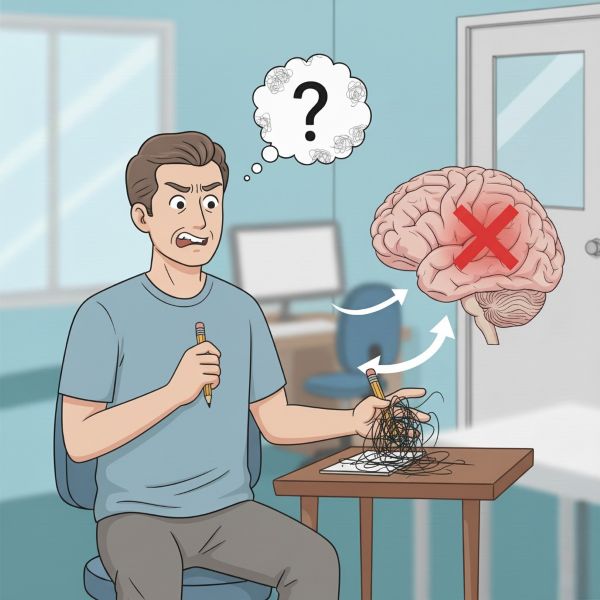Alien Hand, Alien Limb
Definition and Clinical Features
An alien limb, most often the arm (alien hand), is a neurological disorder in which a person's limb acts on its own, without their conscious control. The patient feels a sense of disownership from the limb, describing it as uncooperative or "having a mind of its own" (hence the French term le main étranger). The limb may exhibit slow, involuntary, wandering, or quasi-purposive movements, such as levitating, grasping objects, or interfering with the actions of the healthy limb (intermanual conflict). These phenomena are often associated with a prominent grasp reflex, forced groping, and magnetic movements.

In alien hand syndrome, one hand may perform complex, unintended actions, often frustrating the patient by working against the other hand.
Types and Anatomical Correlates
Different types of alien hand syndrome have been described, reflecting the location of the underlying brain lesion:
- Anterior (Motor) Variants:
- Frontal Type: Caused by damage to the medial frontal cortex (supplementary motor area). It is characterized by forced grasping, groping, and compulsive manipulation of objects (utilization behavior).
- Callosal Type: Caused by lesions of the corpus callosum. The primary feature is intermanual conflict, where the two hands act in opposition to one another.
- Posterior (Sensory) Variant: A rare type resulting from lesions affecting the parietal lobe, causing sensory deficits and ataxia that lead to a feeling of estrangement from the limb.
Associated Conditions and Pathophysiology
The alien limb phenomenon is associated with several neurological conditions:
- Corticobasal degeneration (a classic cause)
- Stroke affecting the anterior cerebral artery territory
- Tumors or hemorrhage affecting the corpus callosum or medial frontal cortex
- Neurosurgery, such as commissurotomy (split-brain surgery)
- Rarely, Alzheimer’s disease
Functional imaging studies suggest that damage to the medial frontal cortex (supplementary motor area) and anterior cingulate cortex disrupts the sense of agency and the execution of learned motor programs, leading to the release of these programs from voluntary control.
References
Ay H, Buonanno FS, Price BH, Le DA, Koroshetz WJ. Sensory alien hand syndrome: case report and review of the literature. Journal of Neurology, Neurosurgery and Psychiatry 1998; 65: 366-369
Doody RS, Jankovic J. The alien hand and related signs. Journal of Neurology, Neurosurgery and Psychiatry 1992; 55: 806-810
Feinberg TE, Schindler RJ, Flanagan NG, Haber LD. Two alien hand syndromes. Neurology 1992; 42: 19-24
Josephs KA, Rossor MN. The alien limb. Practical Neurology 2004; 4: 44-45
Sawle GV, Brooks DJ, Marsden CD, Frackowiak RSJ. Corticobasal degeneration: a unique pattern of regional cortical oxygen hypometabolism and striatal fluorodopa uptake demonstrated by positron emission tomography. Brain 1991; 114: 541-556
Cross References
Alien grasp reflex; Apraxia; Ataxia; "Compulsive grasping hand"; Forced groping; Grasp reflex; Intermanual conflict; Levitation; Magnetic movements; Utilization behavior

